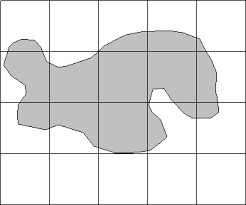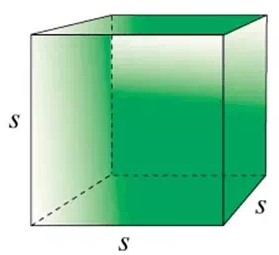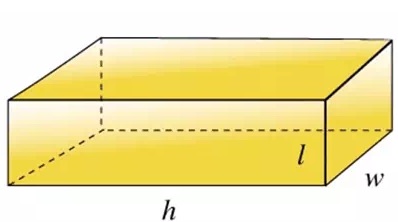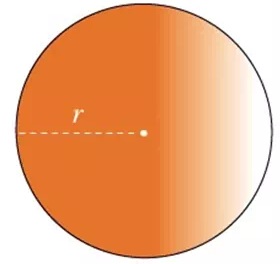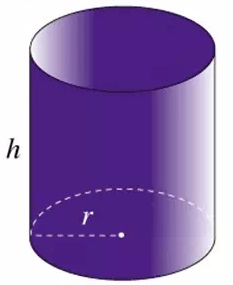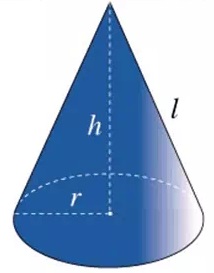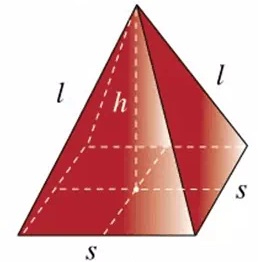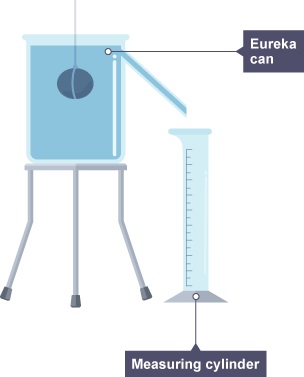- Mass per unit volume. Its symbol is rho (ρ). Its SI Unit is Kilogramme per Cubic Metre (Kg/m
3)
A block of stone has a mass of 140g and is 10cm long, 5 cm wide and 4 cm high. Calculate the density of the stone
Solution
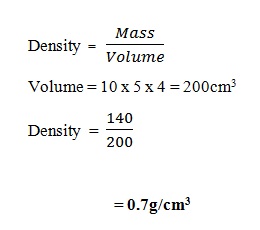
Density Using a Density Bottle
The mass of a density bottle is 20g when empty and 45g when filled with water. When filled with liquid x, its mass is 400g. Calculate the density of liquid x. (density of water 1.0 g/cm
3)
Solution
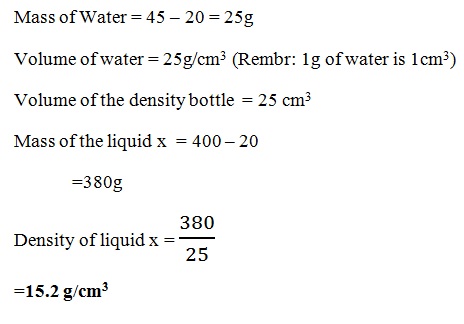
Relative Density
Relative density (RD) is the ratio of the density of a substance to the density of water. It is also known as
specific gravity (SG).
- If the value is
less than 1, it is less dense than water and would float
- If the value is
equals to 1, it has the same density as water
- If the value is
greater than 1 it is more dense than water and would sink.

